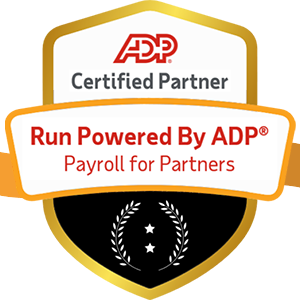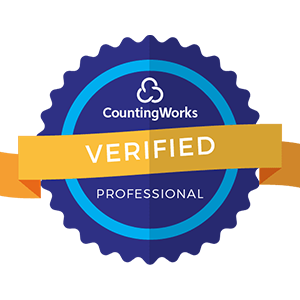
Introduction: In the ever-evolving landscape of the modern workplace, a new trend is emerging that is revolutionizing the way companies approach employee compensation: personalized pay packages. Gone are the days of one-size-fits-all salary structures, as forward-thinking organizations are now tailoring their compensation strategies to meet the unique needs and preferences of individual employees. This shift towards customization not only reflects a growing recognition of the diverse priorities and lifestyles of today's workforce but also offers a powerful tool for attracting and retaining top talent in an increasingly competitive job market.

To understand the rise of personalized compensation packages, it's essential to first examine the evolving expectations of the modern workforce. Millennials and Generation Z, who now make up a significant portion of the job market, bring with them a new set of values and priorities that extend beyond traditional salary considerations. These younger generations place a premium on work-life balance, flexibility, and personal growth opportunities, and they expect their employers to recognize and accommodate these needs.
Moreover, the ongoing digital transformation has made it easier than ever for employees to access information about industry standards and compare compensation packages across different companies. This heightened transparency has put pressure on organizations to differentiate themselves not only through competitive salaries but also through unique and tailored benefits that cater to the specific needs of their workforce.
For companies, the adoption of personalized compensation packages offers a range of compelling benefits. By tailoring pay structures to individual employee preferences, organizations can demonstrate a genuine commitment to the well-being and satisfaction of their workforce. This, in turn, can lead to higher levels of employee engagement, productivity, and loyalty, as workers feel valued and supported in their personal and professional lives.
Personalized compensation also allows companies to attract and retain top talent in a highly competitive job market. By offering customized pay packages that align with the unique needs and priorities of individual employees, organizations can differentiate themselves from competitors and position themselves as employers of choice. This is particularly important in industries where skilled workers are in high demand, such as technology, healthcare, and finance.
Furthermore, personalized compensation can help companies to optimize their labor costs by allocating resources more efficiently. By tailoring benefits to individual employee needs, organizations can avoid the wasteful spending that often accompanies generic, one-size-fits-all compensation packages. This targeted approach not only ensures that each dollar spent on employee compensation is delivering maximum value but also frees up resources that can be invested in other areas of the business.

While the benefits of personalized compensation are clear, implementing such a strategy requires careful planning and execution. To successfully transition to a customized pay structure, companies must first gain a deep understanding of their workforce's diverse needs and preferences. This can be achieved through employee surveys, focus groups, and one-on-one conversations, which provide valuable insights into the priorities and motivations of individual workers.
Armed with this knowledge, organizations can then design a flexible compensation framework that allows for customization while still maintaining a sense of fairness and consistency across the workforce. This may involve offering a menu of benefits options from which employees can choose, or providing a base salary supplemented by a range of variable incentives tied to individual performance and goals.
It's also essential to ensure that personalized compensation packages are aligned with the overall strategic objectives of the organization. By tying individual employee incentives to company-wide goals, leaders can create a sense of shared purpose and motivation that drives collective success.
While the rise of personalized compensation packages offers significant benefits for both employees and employers, it's important to acknowledge the challenges and considerations that come with this approach. One potential concern is the risk of creating a sense of inequality or favoritism within the workforce, particularly if the criteria for customization are not clearly defined and communicated.
To mitigate this risk, companies must ensure that their personalized compensation strategies are grounded in objective, data-driven insights and that the process for determining individual pay packages is transparent and fair. This may involve establishing clear guidelines for eligibility and communicating these guidelines consistently across the organization.
Another consideration is the administrative complexity that comes with managing a diverse array of personalized compensation packages. To streamline this process, companies may need to invest in new HR technologies and systems that can accommodate the increased variability and customization of pay structures. This may require significant upfront costs and a period of adjustment as employees and managers adapt to the new systems.

As the trend towards personalized compensation continues to gain momentum, it's likely that we will see an increasing number of companies adopting this approach in the years to come. However, the specific forms that personalized pay packages take may vary widely depending on the unique needs and priorities of each organization and its workforce.
One potential direction for the future of personalized compensation is a greater emphasis on non-financial rewards and recognition. As younger generations place a growing value on intangible benefits such as work-life balance, personal growth opportunities, and a sense of purpose and meaning in their work, companies may need to think beyond traditional salary and benefits to create truly compelling compensation packages.
This could involve offering more flexible work arrangements, such as remote work options or compressed workweeks, or providing opportunities for professional development and skill-building through training programs, mentorship, and stretch assignments. It may also mean creating a stronger link between individual employee contributions and the overall mission and values of the organization, helping workers to see the impact of their efforts in a broader context.
Another possible trend is the increasing use of data analytics and artificial intelligence to inform personalized compensation decisions. As HR technologies become more sophisticated, companies may be able to leverage vast amounts of data on employee performance, preferences, and behaviors to create highly targeted and effective compensation strategies. This data-driven approach could help to remove bias and subjectivity from the compensation process, ensuring that pay packages are based on objective, measurable criteria.
The rise of personalized compensation packages represents a fundamental shift in the way companies approach employee pay and benefits. By tailoring compensation to the unique needs and preferences of individual workers, organizations can create a more engaged, productive, and loyal workforce while also optimizing labor costs and attracting top talent in a competitive job market.
However, the transition to personalized compensation is not without its challenges and considerations. To be successful, companies must approach this strategy with careful planning, clear communication, and a commitment to fairness and transparency. They must also be prepared to invest in the necessary technologies and systems to manage the increased complexity of customized pay structures.
As the world of work continues to evolve, it's clear that personalized compensation will play an increasingly important role in shaping the employee experience and driving business success. By embracing this trend and adapting to the changing expectations of the modern workforce, companies can position themselves for long-term growth and competitiveness in the years to come.


